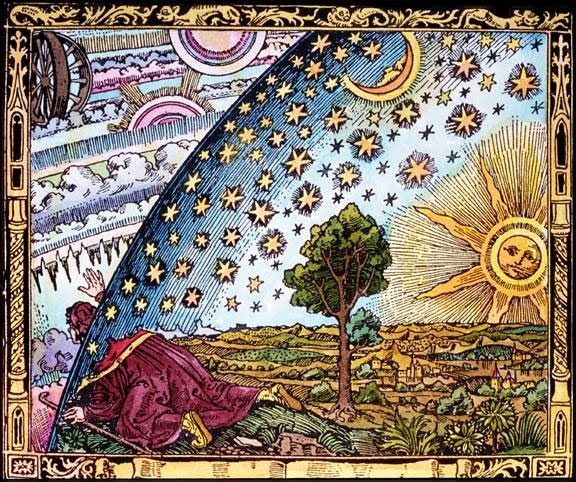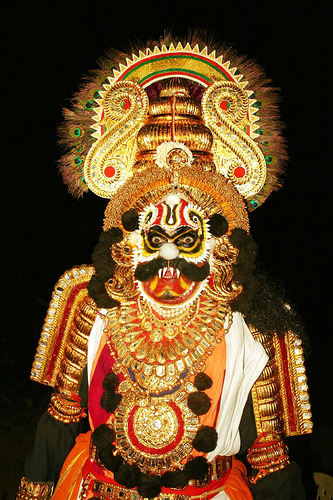Ajama: ~5 million people; ~70/square mile; densely forested; complex, centralized cities; hundreds of woodland villages
*Si-drahal: 67,000; bustling trade hub; densely wooded; traditional Elvish with some human elements
Trigizala: 56,000; bustling; somewhat wooded; separated between traditional Elvish in the woods and traditional Human in the grasses
Nalaman: 22,000; densely wooded; traditional Elvish
Haraz: 41,000; densely wooded; traditional Elvish with some Human elements
Kidaj: 12,000; densely wooded frontier; traditional Elvish
Pin: 8,000; lightly wooded frontier; traditional Human with some Elvish elements
Ka'elkannah: ~850,000 people; ~100/square mile; hilly and rocky; main city is extremely urban, centralized, and developed; other territories have suitable amounts of arable land; slave-driving
*Ka'elkannah (main city): 149,000; bustling; trade hub; meshing of seafaring Orcish and Human
(~180,000 on main island altogether; greater metro area would be this entire population)
Ainbridge Commonwealth: ~330,000 people; lower density in the Greater Ainbridge forests; hilly and rocky; main city is urban and slightly centralized; some areas of the main island are farmlands or open land
*Rivetwood (main city): 87,000; bustling; trade hub; seafaring Human
(~128,000 on main island altogether; greater metro area would be this entire population)
Fyirmenedd: ~3 million people; ~40/square mile; magical elements and exceptional architecture support underground civilization; extremely mountainous; complex, centralized cities; hundreds of inner-hall villages and towns
*Gryddfyir: 42,000; bustling; highly mountainous; traditional Dwarvish
Sectreffyn: 16,000; highly mountainous; coniferous; traditional Dwarvish
Dolenn: 20,000; low mountainous; coniferous; traditional Dwarvish
Caerfyir: 12,000; high mountainous; coniferous; traditional Dwarvish
Gennwyddyir: 10,000; low mountainous; coniferous; traditional Dwarvish
Cadfenn: 31,000; bustling; low mountainous; coniferous; traditional Dwarvish
Yoacwerr: 8,000; icy frontier; low mountainous; traditional Dwarvish
Madraga: ~1 million people; ~70/square mile; densely forested; complex, centralized cities; many woodland villages
*Madraga: 30,000; bustling; densely forested; traditional Elvish
Juil: 12,000; densely forested; traditional Elvish
Aiel: 15,000; densely forested; traditional Elvish
Ufalmu-aw-Hanajj: ~1.7 million people / ~300,000 in the desert regions / ~1.4 million people in the Bearsong River and Akkal Ridge regions; spread-out cities with little urban feel; atypical, desert-dwelling Human; "Arabic" Human; hundreds of desert hamlets
*Kalligu: 9,000; spread-out desert frontier; Arabic-desert Human
Hazmar: 17,000; spread-out desert with some urban centers; Arabic-desert Human
Galush: 12,000; spread-out desert; Arabic-desert Human
Uking-wa-mto: 10,000; spread-out desert frontier; Arabic-desert Human
Zambar: 53,000; bustling; urban trade hub; semi-arid Human
Kallimar: 31,000; bustling urban minor trade hub; semi-arid Human
Oagramakandi: ~11.5 million people; ~90/square mile; large amounts of arable land; low-mountain peoples with moderate amounts of forests; suitable river systems; ideal growing climate (not too dry); complex, centralized cities; hundreds of towns and villages; some "hidden" Elvish enclaves
*Mokaka: 102,000; bustling urban trade hub, with some spread-out districts; low mountainous, lowland, and moderately forested; traditional Orcish with some Goblin and Human elements
Zargat: 52,000; bustling urban, with some spread-out districts; low mountainous forested; traditional Orcish with some Goblin elements
Morain: 67,000; bustling urban, with some spread-out districts; low mountainous forested; coastal, lake harbors; traditional Orcish with some Goblin elements
Kandia: 82,000; bustling urban trade hub, with some spread-out districts; low mountainous forested; traditional Orcish with some Goblin elements
Izkili: 41,000; bustling, but mostly spread-out; lowlands; traditional Goblin with some Orcish and Human elements
Dhirum: 49,000; bustling frontier, spread-out with some urban centers; lowland riverside; meshing of traditional Orcish and Human
Luxavo: ~325,000 people; ~50/square mile; exceptional architecture supports underground civilization; low mountainous; complex, centralized main city with most of the population living in inner-hall towns and villages
*Luxavo (main city): 82,000; bustling minor trade hub; regional passage; traditional Dwarvish
Tavastara-Zai: ~560,000 people; ~60/square mile; exceptional architecture supports underground civilization, but meshed with over-land elements; low mountainous; complex, centralized main city with supporting inner-cave towns and villages, and hilly, mountainous towns and villages
*Tavastara-Zai (main city): 123,000; bustling trade hub; regional passage; traditional Goblin with some "spartan" Elvish elements
Kertus: ~170,000 people; ~40/square mile; massive urban area on a rocky, coastal region with supporting farmlands; often-rainy climate
*Kertus (main city): 160,000; bustling urban, over-crowded trade hub; mostly traditional and seafaring Human, with several diverse districts sporting a boiling pot of other racial styles; immensely overwhelming urban environment
Kayuga: ~776,000 people; ~30/square mile; low to mid-mountain society; largely tribal, spread-out populations; "cities" are congregated, spread-out tribal areas connected by winding pathways; majority of population lives in tribal towns and villages
*Moak: 23,000; spread-out mountain-side; tribal Orcish
Wyam: 16,000; spread-out mountain-side; tribal Orcish
Kawami: 9,000; spread-out mountain-side; tribal Orcish
Nalahorah: ~900,000 people; ~60/square mile; low mountain society; spread-out cities with hundreds of supporting villages and towns; rocky; dry weather
*Ahragoe: 25,000; spread-out; low mountainous; traditional Orc with some "African" Human elements
Goen: 14,000; spread-out; low mountainous; traditional Orc with some "African" Human elements
Kin Sahae: 22,000; spread-out; low mountainous; traditional Orc with some "African" Human elements
Lanah: 9,000; spread-out; low mountainous; traditional Orc
Dindisma: ~1.2 million people; ~90/square mile; centralized cities with hundreds of supporting villages and towns; little arable land; somewhat dry
*Fenixal: 39,000; bustling urban with some spread-out districts; "Arabic" Human with some Orcish elements
Triston: 32,000; bustling urban with some spread-out districts; seafaring "Arabic" Human with some seafaring Orcish elements
Comas: 19,000; bustling urban with some spread-out districts; seafaring "Arabic" Human with some seafaring Orcish elements
Minalix: 15,000; spread-out; "Arabic" Human
Yali al-Telat: ~1.6 million people; ~90/square mile; complex, centralized cities with hundreds of supporting villages and towns; plains/semi-arid lifestyle; plenty of arable land; somewhat dry
*Riyabah: 47,000; bustling urban trade hub; "Arabic" Human with some "Arabic" Orcish elements
Sedi: 21,000; bustling urban; "Arabic" Human with some "Arabic" Orcish and "Arabic" Elvish elements
Tela Telir: 23,000; bustling urban; "Arabic" Human with some "Arabic" Orcish elements
Hamenji: 36,000; bustling urban minor trade hub; "Arabic" Human
Fiyadin: 31,000; bustling urban; "Arabic" seafaring Human
Na-ab-Thulir: 16,000; bustling urban; "Arabic" Human
Qanaqar: ~350,000 people; ~90/square mile; complex, centralized cities with hundreds of supporting villages and towns; plains/semi-arid lifestyle; plenty of arable land; somewhat dry
Taghdar: 42,000; bustling urban trade hub; "Arabic" Human with some "Arabic" Goblin elements
Dar Kordina: 24,000; bustling urban; "Arabic" Human with a smattering of "Arabic" Goblin elements
Cala: ~240,000 people; ~90/square mile; single main city with hundreds of supporting villages and towns; Baltic/northern lifestyle; suitable amount of arable land
*Dertre: 32,000; bustling urban; north-seafaring Human
Lorenathia: ~2.5 million people; ~100/square mile; complex, centralized cities with hundreds of supporting villages and towns; plenty of arable land
*Senathia: 97,000; bustling urban trade hub; traditional Human
Nalen: 49,000; bustling urban; traditional Human
Pilind: 64,000; bustling urban; traditional Human with some Elvish elements
Gerovin: 32,000; bustling urban; traditional Human with some Elvish elements
Wineria: 58,000; bustling urban; traditional Human with some Elvish elements
Hana Flena: 23,000; bustling urban; traditional Human with some Elvish elements
Enorti: ~645,000 people; ~100/square mile; complex, centralized cities with hundreds of supporting villages and towns; plenty of arable land
*Hareden: 72,000; bustling urban trade hub; traditional Human with some Elvish elements
Ienelia: 63,000; bustling urban; traditional Human with heavy Elvish elements
Forden: 41,000; bustling urban; traditional Human with some Elvish elements
Arrek: ~500,000 people; ~30/square mile; spread-out, intricate mountain-cave and mountain-side cities with supporting similarly-designed villages and towns
*Gorgelak: 23,000; bustling, spread-out with some urban centers; traditional Goblin
Hrek: 11,000; spread-out with some urban centers; traditional Goblin
Norrechn: 15,000; bustling, spread-out with some urban centers; traditional Goblin
Shindarik: 9,000; spread-out; traditional Goblin
Mulund: ~170,000 people; ~40/square mile; exceptional architecture supports underground civilization; complex, centralized main city with most of the population living in inner-hall towns and villages
*Byrand: 12,000; bustling, centralized urban; traditional Dwarvish
Heras-Fel: ~1.8 million people [living] ?; ~80/square mile ?; estimates; summoning necromancers; skeleton slaves building massive citadels
*Kendas-Minar: 135,000 [living]; bustling, dark, centralized urban; several lakeside docks; atypical necromantic Human and Elf; slave skeletons
Havirnel: 18,000 [living]; ruins of a great, once-bustling, centralized city; atypical necromantic Human and Elf; slave skeletons
Kelen: 25,000 [living]; ruins of a great, once-bustling, centralized city; atypical necromantic Human and Elf; slave skeletons
Tena: 34,000 [living]; ruins of a great, once-bustling, centralized city; atypical necromantic Human and Elf; slave skeletons
Wyldra: ~1.4 million people; ~100/square mile; complex, centralized cities with hundreds of supporting villages and towns; plenty of arable land; mix of urban Elvish with traditional Elvish
*Anuvyl: 57,000; bustling, centralized urban; trade hub; cliffside; seafaring Elvish with seafaring Human and Dwarvish elements
Naliria: 14,000; bustling; somewhat urban; traditional Elvish
Hollymi: 11,000; bustling; somewhat urban; traditional Elvish with some Human elements
Teynir: 31,000; bustling; centralized urban; minor trade hub; cliffside; seafaring Elvish with seafaring Human and Dwarvish elements
Aston: 37,000; bustling; centralized urban; minor trade hub; cliffside; seafaring Elvish with seafaring Human and Dwarvish elements
Halde: ~2.1 million people; complex, centralized cities with hundreds of supporting villages and towns; plenty of arable land
*Aswarol: 51,000 people; bustling urban trade hub; Byzantine Human with some Dwarvish and Elvish elements
Walensy: 15,000 people; bustling urban; Byzantine Human with some Elvish elements
Cocuvy: 39,000 people; bustling urban; Byzantine Human with some Dwarvish and Elvish elements
Tolo: 31,000 people; bustling urban; Byzantine Human with some Dwarvish and Elvish elements
Birnidre: 23,000 people; bustling urban; Byzantine Human with some Elvish elements
[incomplete - more coming soon]














 Also, yes, "ifs" are not useful for me. I will let Ninja Dude make a major reply, but I can add in a bit for now.
Also, yes, "ifs" are not useful for me. I will let Ninja Dude make a major reply, but I can add in a bit for now.